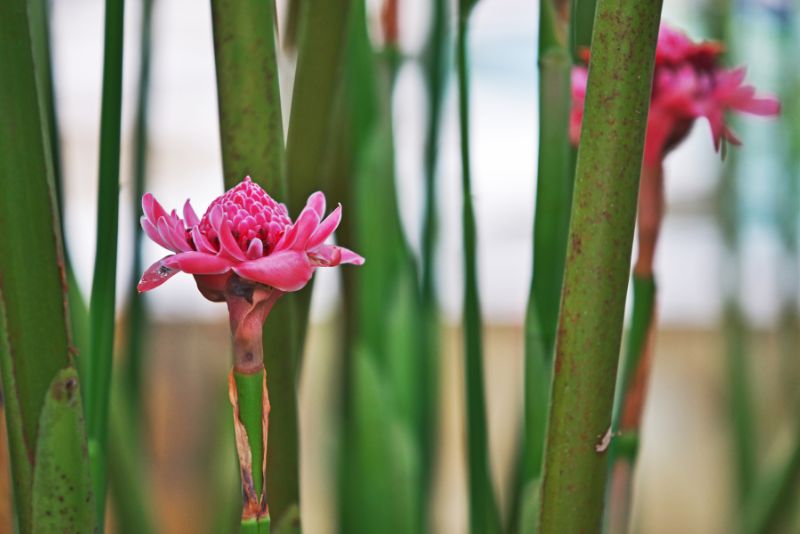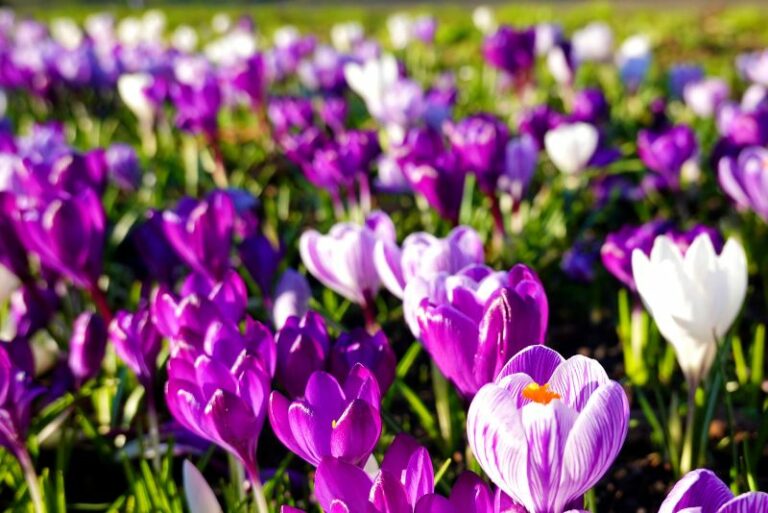Growing Torch Ginger Flowers: A Gardener’s Guide
In the palette of Mother Nature’s vibrant blooms, few flowers paint a more exotic picture than the Torch Ginger Lily. Known for its show-stopping, fiery red blooms reminiscent of a lit torch, the Torch Ginger plant is a jewel for any gardening enthusiast seeking to add a touch of the tropics to their land. This comprehensive guide will walk you through the intricate ways of cultivating these unique flowers, enriching your gardening journey with the luster of Torch Gingers.
Understanding Torch Ginger Flowers

Before delving into the art of cultivation, let’s deepen our appreciation for these remarkable plants.
The Vibrant Torch Ginger Plant
Torch Gingers, also known as Etlingera elatior, are tall, robust plants that belong to the Zingiberaceae family—the same family as true ginger. Originating from Southeast Asia, they are a staple in tropical gardens due to their impressive size and astonishing flowers. The Torch Ginger’s striking inflorescence can grow up to a foot tall, unfolding layer after layer of waxy, red petals from a cone-shaped bract, and emitting a light, spicy fragrance, often compared to ginger.
Varieties of Torch Ginger Lilies
Within the broad category of Torch Gingers, several species and cultivars exist, each with its own charm. The Etlingera elatior variety is most common, boasting the classic red flower. You’ll also find Etlingera maingayi, which sports pink blossoms, and the stunning Etlingera corneri with its pale yellow flowers. Some varieties, like Etlingera venusta, feature decorative or variegated foliage, making them aesthetically pleasing even when not in bloom.
Growing Torch Ginger Flowers
Cultivating Torch Ginger flowers is a journey that starts with the right foundation—choosing the perfect spot to plant your seeds or rhizomes.
Ideal Growing Conditions
Torch Gingers thrive in warm, humid climates and prefer moist, well-draining soil. They are accustomed to filtered sunlight, such as the dappled sun found under the canopy of a tropical forest. In regions that experience colder temperatures, growing Torch Gingers in pots that can be moved to shelter during winter is advised.
Climate
Torch Gingers are frost-sensitive and can only withstand USDA Hardiness Zone 10 and above. They can tolerate temperatures down to 50°F (10°C) but will suffer damage if subjected to colder conditions. For gardeners outside these zones, growing them in a greenhouse or as indoor potted plants is the best option.
Soil
Acidic, fertile soil is a must for Torch Gingers. Aim for a pH level of 6.0 to 7.0, rich in organic matter. A mix of peat moss, compost, and sand or perlite to improve drainage is ideal.
Sunlight
Despite being lovers of warmth, direct sunlight can be too harsh for these plants. Choose a location that receives morning sun and afternoon shade, or places where sunlight is filtered through trees or a shade structure.
Planting and Propagation Tips
The best time to plant Torch Ginger rhizomes is in late spring or early summer when the soil temperature is at least 70°F (21°C). Begin by digging a hole twice the diameter of the rhizome and approximately 6 to 8 inches deep. Place the rhizome horizontally in the hole, cover with soil, and water generously.
Propagation by Division
Torch Gingers can be propagated by dividing the rhizomes, which is best done during the plant’s dormant season. Ensure that each divided piece has at least one growing point and a few roots. Plant the divisions immediately to avoid dehydration.
Starting From Seeds
If you’re starting from seeds, soak them in warm water for 24 hours to aid germination. Sow the seeds in trays with a well-draining, sterile seed-starting mix. Keep the soil consistently moist and maintain a temperature of 75-80°F (24-27°C) for optimal growth.
Caring for Torch Ginger Plants
A nurturing hand is the key to fostering healthy, blooming Torch Gingers. Here’s how to tend to your plants as they grow.
Watering and Fertilizing Guidelines
Consistent moisture is crucial for Torch Gingers, especially during their active growth period. Water the plants regularly, but ensure the soil doesn’t become waterlogged. A layer of organic mulch can help retain moisture and keep the roots cool. In terms of fertilization, use a balanced fertilizer, such as a 10-10-10, every two to three weeks during the growing season.
Fertilizing in Containers
For Torch Gingers growing in containers, a slow-release fertilizer is a convenient way to ensure they receive nutrients over several months. Always adhere to the instructions on the fertilizer packaging to prevent over-fertilization, which can damage the plant.
Pest Control and Disease Prevention
Keeping Torch Ginger plants healthy requires vigilance against pests and diseases. Common pests for Torch Gingers include aphids, spider mites, and mealybugs. Regularly inspect the plants for signs of infestation, and if found, treat them with insecticidal soap or neem oil.
Preventing Diseases
To prevent diseases like leaf spot and root rot, avoid over-watering, which can lead to standing water around the roots. Ensure proper air circulation around the plant, and sanitize your gardening tools between uses to prevent the spread of disease.
Harvesting and Utilizing Torch Ginger
The ultimate reward for growing Torch Ginger flowers is the opportunity to enjoy their beauty and utilize their unique qualities.
Harvesting Techniques
Torch Ginger flowers can be harvested at the peak of their bloom by cutting the flower stalk at its base. It’s best to do this in the morning when the flowers are the freshest. Trim the stalk to your desired length and place the cut end in water immediately to prolong the flowers’ vase life.
Creative Uses of Torch Ginger Flowers
The applications for Torch Ginger flowers are as diverse as they are delightful. They are not only a feast for the eyes but also for the palate. In many tropical cuisines, the edible flower buds of Torch Gingers are used to add a tangy, ginger-like flavor to dishes. They also make a stunning addition to floral arrangements and are often used as a cut flower in wedding bouquets and other special events.
Conclusion
The process of growing Torch Ginger flowers requires patience and a keen understanding of their needs. It’s a journey that connects us to the warmth and beauty of tropical flora, and it’s one that many gardeners find immensely rewarding. By following the guidelines in this detailed guide, you are on the path to becoming a Torch Ginger cultivation expert. So, roll up your sleeves, pick your spot, and get ready to watch your garden ignite with the splendor of Torch Ginger lilies.






